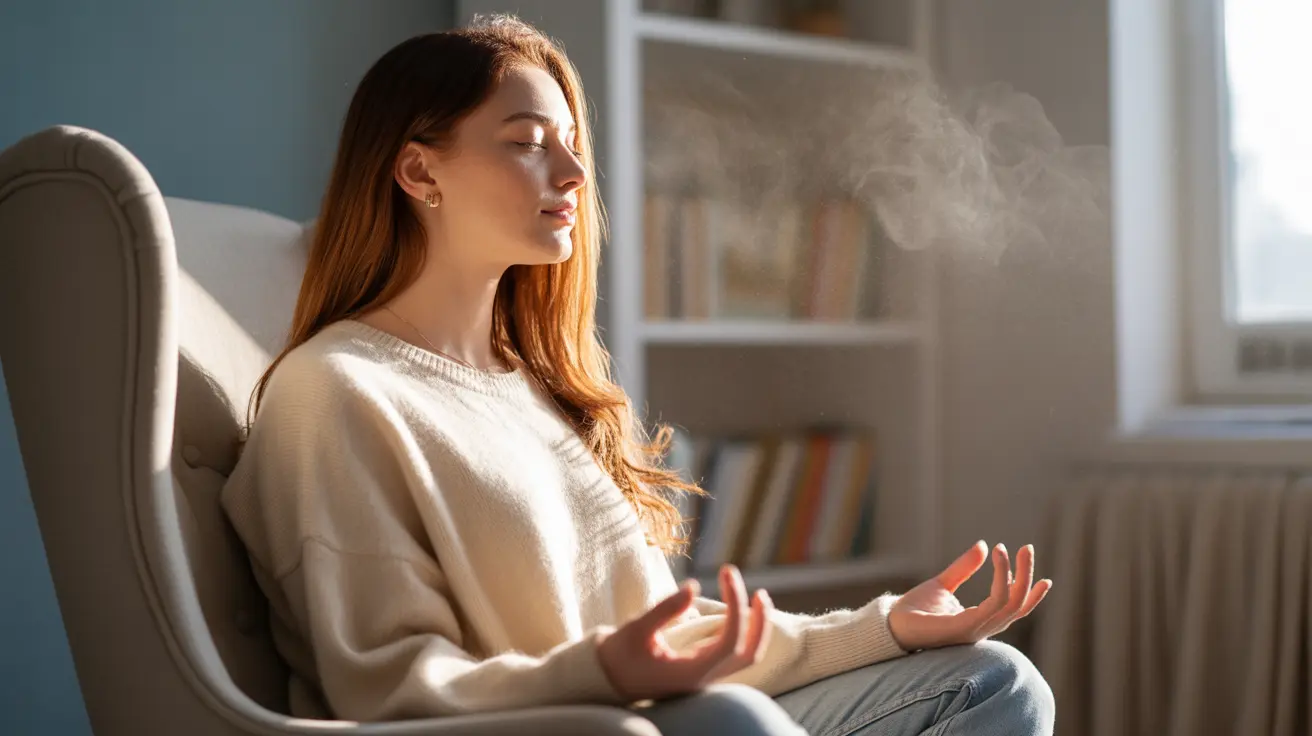When stress, anxiety, or anger take hold, knowing how to calm down quickly and effectively can make a significant difference in your mental and physical well-being. Whether you're facing a challenging situation at work, dealing with personal conflicts, or experiencing general anxiety, having reliable calming techniques at your disposal is essential for maintaining emotional balance.
In this comprehensive guide, we'll explore proven methods to help you regain composure and peace of mind, focusing on practical techniques you can implement immediately when you need them most.
The Power of Breath: Your First Line of Defense
Breathing exercises are among the most effective and accessible tools for calming down quickly. These techniques work by activating your parasympathetic nervous system, which helps counteract the "fight or flight" response that occurs during stress.
The 4-7-8 Breathing Technique
This powerful breathing pattern can help calm your nervous system within minutes:
- Inhale quietly through your nose for 4 counts
- Hold your breath for 7 counts
- Exhale completely through your mouth for 8 counts
- Repeat this cycle 4 times
Box Breathing Method
This technique, used by military professionals and anxiety specialists, follows a simple pattern:
- Inhale for 4 counts
- Hold for 4 counts
- Exhale for 4 counts
- Hold for 4 counts
- Repeat as needed
Physical Actions for Immediate Tension Release
Sometimes, physical movement can be the key to releasing stress and anxiety quickly. These actions can help ground you in the present moment and release built-up tension:
- Progressive muscle relaxation
- Gentle shoulder rolls and neck stretches
- Short walk or simple stretching exercises
- Facial muscle relaxation
- Hand exercises or stress ball squeezing
The Mind-Body Connection: Mental Techniques
Combining physical relaxation with mental strategies can enhance your ability to calm down effectively:
Grounding Exercises
Use the 5-4-3-2-1 method:
- Name 5 things you can see
- Notice 4 things you can touch
- Identify 3 things you can hear
- Focus on 2 things you can smell
- Acknowledge 1 thing you can taste
Visualization Techniques
Create a mental image of a peaceful, safe place. Include specific details about what you see, hear, and feel in this calming environment. This can help redirect your mind from stressful thoughts to a more peaceful state.
Lifestyle Factors That Support Emotional Regulation
Your daily habits can significantly impact your ability to calm down when needed:
Nutrition and Hydration
- Stay well-hydrated throughout the day
- Keep healthy snacks available
- Limit caffeine and sugar intake
- Consider calming herbal teas like chamomile or lavender
Regular Practice and Prevention
Incorporating calming techniques into your daily routine, even when you're not stressed, can help build resilience and make these methods more effective when you need them most.
Frequently Asked Questions
What are simple breathing techniques I can use to calm down quickly during anxiety or anger? The 4-7-8 breathing technique and box breathing method are highly effective. Start with box breathing: inhale for 4 counts, hold for 4, exhale for 4, and hold for 4. Repeat this cycle several times until you feel calmer.
How does deep breathing help reduce feelings of stress and improve relaxation? Deep breathing activates your parasympathetic nervous system, which counteracts the stress response. This lowers heart rate, reduces blood pressure, and decreases stress hormone production, helping your body naturally return to a calmer state.
What immediate physical actions can I take to release tension and calm myself down? Try progressive muscle relaxation, gentle stretching, taking a short walk, or practicing facial muscle relaxation. These physical actions help release tension and promote a sense of calm through movement and body awareness.
Can snacks or hydration help improve the effectiveness of calming down techniques? Yes, staying well-hydrated and maintaining stable blood sugar levels can help your body better manage stress. Choose water and healthy, balanced snacks while avoiding excessive caffeine or sugar, which can increase anxiety.
How often should I practice breathing and relaxation exercises to manage anxiety better? For best results, practice these techniques daily for 5-10 minutes, even when you're not feeling stressed. Regular practice helps build neural pathways that make these techniques more effective during actual stress situations.




